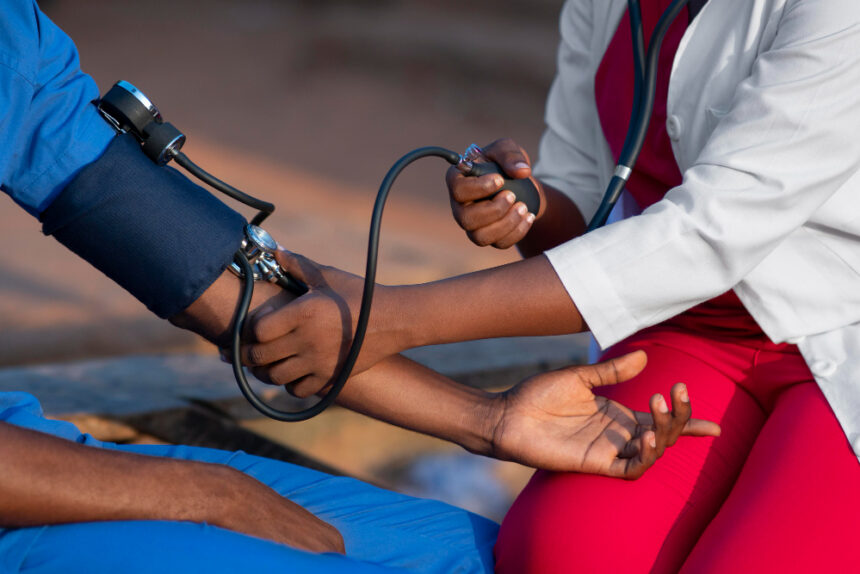Maintaining cardiovascular health is a critical component of overall well-being. In the modern world, where sedentary lifestyles are increasingly common, the role of exercise has never been more important. This guide delves deep into how regular physical activity benefits the heart and vascular system, backed by science and real-life success stories.
Cardiovascular health refers to the optimal functioning of the heart and blood vessels. When this system works efficiently, oxygen and nutrients are properly delivered throughout the body. Good cardiovascular health minimizes the risk of heart disease, stroke, hypertension, and many chronic conditions.
Modern lifestyles, dominated by screen time, fast food, and stress, challenge heart health in multiple ways. Fortunately, regular exercise can significantly counter these threats. It enhances heart function, boosts blood circulation, and reduces blood pressure, making it an essential pillar of disease prevention and long-term wellness.
The rise in global cardiovascular diseases has sparked interest in lifestyle interventions. Among them, physical activity remains the most accessible and cost-effective solution. Whether you’re walking, swimming, or lifting weights, every movement contributes to building a stronger heart.
1. How Exercise Strengthens the Heart
When you engage in physical activity, your heart rate increases. Over time, this repeated challenge strengthens the heart muscle, allowing it to pump more efficiently. A stronger heart means it can circulate blood with less effort, reducing the workload and stress on the cardiovascular system.
Furthermore, exercise helps in enlarging the chambers of the heart slightly, especially the left ventricle. This enables the heart to eject more blood per beat, improving oxygen delivery. Enhanced heart efficiency is associated with lower resting heart rates—a sign of excellent cardiovascular fitness.
Additionally, aerobic activities promote the development of new blood vessels, a process known as angiogenesis. This helps maintain a healthy network of blood supply even if a vessel becomes partially blocked. In essence, exercise acts like insurance for your circulatory system.
2. Effects of Exercise on Blood Pressure
One of the most profound benefits of physical activity is its ability to lower blood pressure. Elevated blood pressure, or hypertension, puts extra strain on arteries and the heart, increasing the risk of strokes and heart attacks. Regular exercise combats this by improving arterial flexibility and reducing vascular resistance.
Studies have shown that even moderate-intensity exercise, such as brisk walking or cycling, for 30 minutes a day can significantly lower systolic and diastolic pressure. This effect often appears within weeks and can be maintained long-term with continued physical activity.
Moreover, exercise improves the responsiveness of blood vessels to hormonal signals. This means the arteries can dilate and contract more effectively, maintaining healthy blood flow and stabilizing pressure levels across different body states.
3. Improving Circulation and Oxygen Delivery
Good circulation ensures that every tissue in your body receives the oxygen and nutrients it needs. When you move, your muscles demand more oxygen, prompting your heart and lungs to work harder. Over time, this demand leads to improved efficiency in both oxygen intake and delivery.
Physical activity enhances the body’s ability to utilize oxygen. Known as VO₂ max, this measurement increases with consistent aerobic exercise. A higher VO₂ max reflects superior cardiovascular and respiratory health, making daily activities feel easier and less tiring.
Better circulation also helps in waste removal. By enhancing blood flow, exercise supports kidney function and helps clear metabolic byproducts from the body more efficiently. The overall result is not only better heart health but also improved systemic wellness.
4. Exercise and Cholesterol Management
Cholesterol levels play a vital role in heart health. Regular physical activity can help balance cholesterol by reducing LDL (bad cholesterol) and increasing HDL (good cholesterol). HDL acts as a scavenger, removing LDL from the bloodstream and transporting it to the liver for excretion.
Incorporating exercise into your lifestyle also influences triglyceride levels. High triglycerides are a risk factor for atherosclerosis—a condition where fatty deposits clog the arteries. By lowering these fats in the blood, exercise helps maintain open and elastic blood vessels.
Resistance training and aerobic workouts both contribute to better lipid profiles. Even small lifestyle changes, such as choosing stairs over elevators or taking walking breaks during work, can have cumulative effects on your cholesterol and overall heart function.
5. Weight Management Through Physical Activity
Excess weight, especially around the abdomen, significantly increases the risk of heart disease. Regular exercise helps burn calories and build lean muscle, making it easier to manage body weight. The combination of reduced fat and increased muscle mass leads to improved metabolism.
Besides aiding fat loss, physical activity alters the body’s hormonal environment. It increases insulin sensitivity and reduces levels of cortisol—the stress hormone that promotes fat storage. These changes make it easier to achieve and maintain a healthy body composition.
Weight management isn’t just about aesthetics. It directly impacts blood pressure, cholesterol, and glucose levels. Thus, regular exercise serves as a foundational strategy for reducing cardiovascular risk by maintaining a healthy body weight.
6. Reducing Inflammation and Oxidative Stress
Chronic inflammation is a hidden contributor to heart disease. It damages blood vessel linings, promotes plaque buildup, and accelerates atherosclerosis. Exercise, surprisingly, acts as an anti-inflammatory agent, reducing markers like C-reactive protein (CRP) in the blood.
Moreover, exercise boosts antioxidant defenses. Physical activity stimulates the production of enzymes like superoxide dismutase (SOD) and glutathione peroxidase, which neutralize free radicals and protect heart tissue from oxidative damage.
Interestingly, while intense exercise temporarily increases inflammation, consistent moderate workouts lead to long-term reductions. This hormetic effect—where a little stress strengthens the body—illustrates the remarkable adaptability of the cardiovascular system.
7. Psychological Benefits of Exercise for Heart Health

Mental well-being and heart health are deeply connected. Chronic stress, depression, and anxiety increase cortisol levels, elevate blood pressure, and contribute to inflammation. Exercise mitigates these effects by promoting the release of endorphins and serotonin.
In fact, physical activity is often prescribed as a complementary treatment for depression. The mood-enhancing effects of exercise can reduce emotional eating, improve sleep, and enhance motivation to maintain a healthy lifestyle—all crucial for cardiovascular health.
Group workouts, dance classes, and nature walks offer additional social and environmental benefits. By reducing isolation and increasing connection, these activities contribute not just to a stronger body, but also a more resilient mind.
8. Exercise as a Preventive Strategy Against Heart Disease
Cardiovascular diseases are the leading cause of death globally. Fortunately, up to 80% of premature heart diseases can be prevented through lifestyle changes, with exercise at the forefront. From reducing arterial plaque to improving heart rate variability, the benefits are vast.
Even in individuals with genetic predispositions to heart conditions, physical activity offers protection. It strengthens the endothelium (inner lining of blood vessels), reduces clot formation, and improves the heart’s ability to adapt to physical stress.
The preventive power of exercise is evident in population studies. People who engage in at least 150 minutes of moderate-intensity activity per week show significantly lower rates of heart attacks, strokes, and hospitalizations compared to sedentary individuals.
9. The Best Types of Exercise for Cardiovascular Health
Not all workouts are created equal when it comes to heart health. Aerobic exercises like walking, jogging, swimming, and cycling are particularly effective at raising heart rate and enhancing endurance. These should form the core of your cardiovascular fitness plan.
Strength training is equally important. It improves muscle mass, bone density, and insulin sensitivity—all of which contribute to heart health. Combining aerobic and resistance exercises provides the most comprehensive benefits.
Flexibility and balance exercises, such as yoga or tai chi, may not directly affect the heart but support overall mobility and stress reduction. A well-rounded exercise routine incorporating all these elements yields optimal results.
10. How to Start and Maintain a Heart-Healthy Exercise Routine
Beginning a new fitness routine can be daunting, but consistency is key. Start small—perhaps with 10-minute walks—and gradually build intensity and duration. The goal is sustainability, not perfection.
Setting realistic goals helps maintain motivation. Whether it’s tracking steps, joining a local fitness class, or training for a 5K, these goals provide structure and a sense of achievement. Remember, every bit of exercise counts.
Accountability partners, fitness apps, and professional trainers can offer support and guidance. Prioritize activities you enjoy, and don’t be afraid to try new forms of movement until you find the one that excites you.
A Stronger Heart Starts With Movement
Cardiovascular health is not determined solely by genetics or medication. Daily habits, especially exercise, play a critical role in shaping the heart’s future. Whether you’re trying to prevent disease or enhance longevity, physical activity is your most powerful tool.
By integrating regular workouts into your lifestyle, you’re not just adding years to your life—you’re adding life to your years. So lace up your shoes, take a deep breath, and begin your journey to a healthier heart today.

